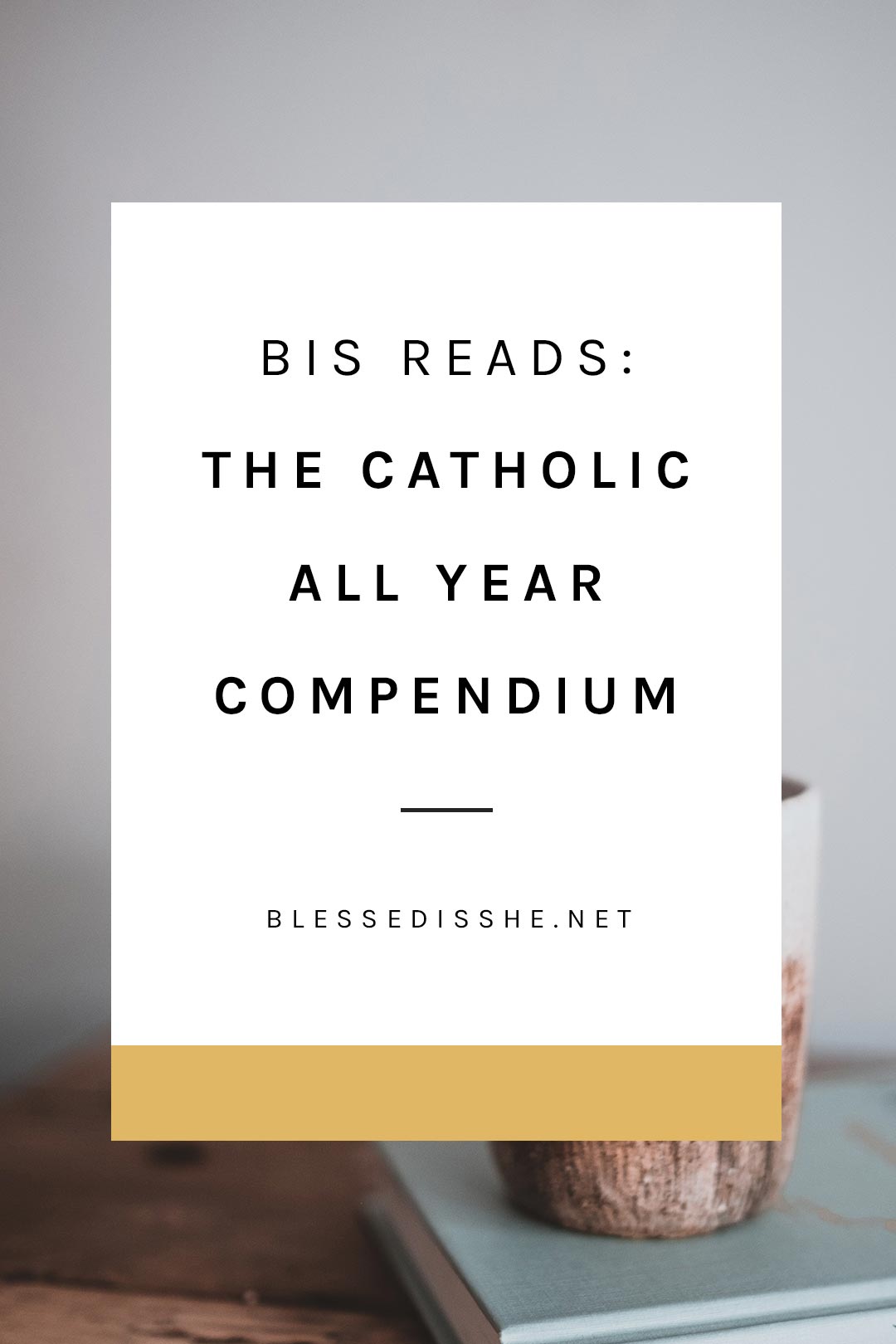
The phrase “liturgically correct” is one of my favorites in the English language. I like how it looks, how it sounds, and what it means; that is, roughly, “in line with the Church.” I strive to live a life and cultivate a home that is liturgically correct, but it’s still kind of a new thing to me. To be honest, I didn’t know what living liturgically meant until I was an adult.
Growing up, we had Advent calendars, but they tracked time from December 1 to 25, no matter the year. One had a cute little mouse hopping from day to day under an image of Santa Claus. Another had small ornaments that attached with Velcro to a quilted tree.
The idea of preparation and anticipation was there, but it didn’t go as deeply as I’ve come to learn it can.
The Catholic All Year Compendium
You don’t have to be Catholic to find it ludicrous to have Halloween candy on shelves in August and Christmas decorations up November 1. A lot of folks are sick of ubiquitous bunnies and elves before the relevant holiday rolls around. And there’s good reason for that.
Scripture tells us there is a season for everything—a time to weep, a time to laugh, a time to mourn, and a time to dance (Ecclesiastes 3:1-8). There are times to rejoice, but they are best understood and enjoyed when they follow times of fasting and repenting. Likewise, fasting and repenting are best suffered through within the context of hope in what’s to come.
Diving into Centuries of Tradition
The Catholic Church has a ridiculously rich tradition of feasts, fasts, prayers, and more, much of which isn’t currently part of popular culture. I, for one, would love to see liturgical living stage a comeback. But where to start?
I’d say with Blessed is She devotion writer, Kendra Tierney’s, recently released book, The Catholic All Year Compendium: Liturgical Living for Real Life. Those last two words—“real life”—are the key to the beauty of this book. It is so incredibly well researched, but it doesn’t read like a treatise. Instead, it’s one family’s journey of digging into the Faith, uncovering traditions—including the all-important reasons they exist—and incorporating them into contemporary life. If you were wondering if living liturgically is possible today, the answer is right here. And it is a big, fat YES.
![]()
![]()
A Life Meant to Be Shared
Humans, for the most part, thrive in community. Liturgical living encourages that. Even when we are in our separate homes, we are all on the same page as to when we’re fasting and when we’re feasting. In doing so, we become more aware of being part of something larger than ourselves—this one, holy, catholic, and apostolic church. Church is not a building, it’s people. It’s living. It’s life.
The rhythm of the seasons in the Church’s year provides ample opportunity to get together, too. Sometimes we need to be alone in our inner rooms. But other times, we need to eat together, decorate together, remember and be inspired together.
We were created to love and to be loved. In a time when more and more people are lonely and searching, liturgical living shows itself as the primary response to the deepest needs of our souls.
The Great Catholic Bookshelf
At the time of this writing, this book has only been out for a few weeks. But I’m convinced that until the traditions of the Church are popular knowledge, this book needs to be on every Catholic family’s shelf. A lot of other people feel this way too—the first printing sold out before the book was officially released!
It’s clear, then, that liturgical living is something our hearts long for, like the hind longs for running water. We live in bodies, in the world. But the physicality of our lives is not something separate from God; rather it’s a means of connecting with Him. Our homes, our meals, our celebrations can, and I would argue, should be imbued with the reality of the Incarnation, of God’s mercy and grace, so that every Catholic home is a place where God’s love is real and tangible.
Being the Change
Venerable Fulton Sheen said:
Who is going to save our Church? Not our bishops, not our priests and religious. It is up to you, the people. You have the minds, the eyes, the ears to save the Church. Your mission is to see that your priests act like priests, your bishops act like bishops and your religious act like religious.
Staying close to Truth with a capital T and loving and living the Church’s traditions are, I think, a large part of what’s going to get us through the dark time we’re in right now. We, the people, are the Church, and the way we live each day has power. We can build up the Church or we can tear it down. Major changes need to be made at a certain level, and that is important. But important, too, is how we each manage the time we’re given on this earth. Important, too, is what we choose to celebrate and how our rejoicing is manifested. Important, too, is acknowledging the history of our Faith that goes back to Christ Himself and is still alive today.
Liturgical Living Looks Different for Everyone
For some of us, that’s going to mean cookies shaped like Our Lady of Guadalupe. For others, it’s going to mean visiting graveyards in the days following Halloween. God is reaching out to each of us in His own way, in a way relevant to the way He made us. How beautiful, how good, how true!
Liturgical living happens in the single life, consecrated life, married life, no matter your vocation. Grab a copy of The Catholic All Year Compendium and discover what that means for you.
Have you picked up this awesome resource yet?!
The Catholic All Year Compendium Review #BISblog //Click to tweet
Lindsay Schlegel is a daughter of God who seeks to encourage, inspire, and lift up the contemporary woman to be all she was created to be. She's the author of Don't Forget to Say Thank You: And Other Parenting Lessons That Brought Me Closer to God, as well as shorter nonfiction and fiction pieces, both online and in print. With joy, she speaks about recognizing God's voice and living the truth therein. Lindsay lives in New Jersey with her high-school-sweetheart-turned-































